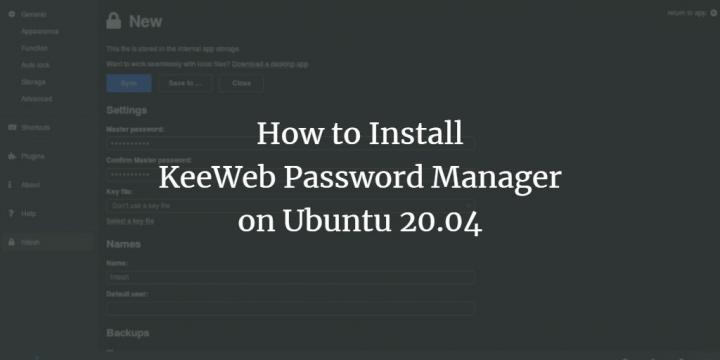


I have recently performed this for a friend on a T61, and it is fairly easy. We want to perform some surgery on it, to ensure that this computer will not be able to connect to the internet ever again.Īdditionally, I think its a good idea to remove the hard drive and any other storage medium that could enable non intentional data persistence. I am a big fan of old Thinkpad laptops, and you can probably get a used T61 for less than 50 EUR. Build your own Trezorįirst, we need some hardware. To deal with other coins, we need to build our own, general purpose trezor-like computer. Unfortunately, Trezor only supports a few coins (Bitcoin, Dash, ETH, Monero). But you could also have a wallet with 100,000 BTC, and nobody could find it, or prove that such wallet exists.
#Keeweb tutorial password
For example, if you're asked to unlock your trezor at US customs, you could use a password that unlocks your wallet with 5 BTC. Every password combination will thus generate a new unique private key(s), which means that you could have unlimited number of wallets. The second seed is a password - any password. There is one seed key generated by Trezor on setup, and this key is securely enclaved on Trezors chipset. Trezor is a hardware wallet, and all transactions are signed on it, which means that if someone hacks your computer, they can't steal your coins.īy far the best feature on Trezor is the way it generates private keys, by combining 2 seeds. Trezor is a fantastic piece of technology that will make your life much easier. In this post I will outline 2 methods you can use to secure your coins. Consequently, this has also created many opportunities for hackers to steal the new found wealth. The recent rise of crypto valuations has spawned a new generation of millionaires.


 0 kommentar(er)
0 kommentar(er)
